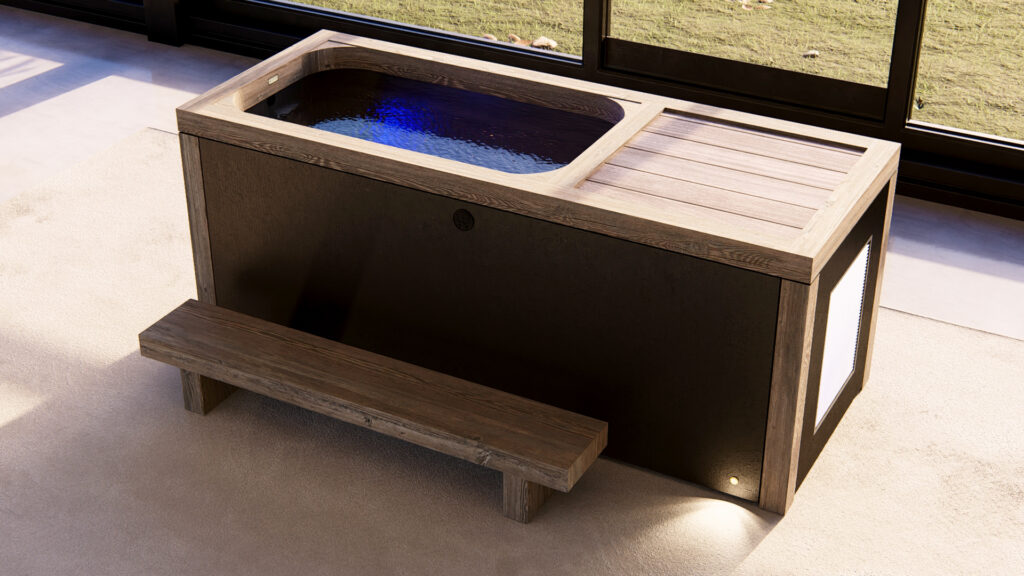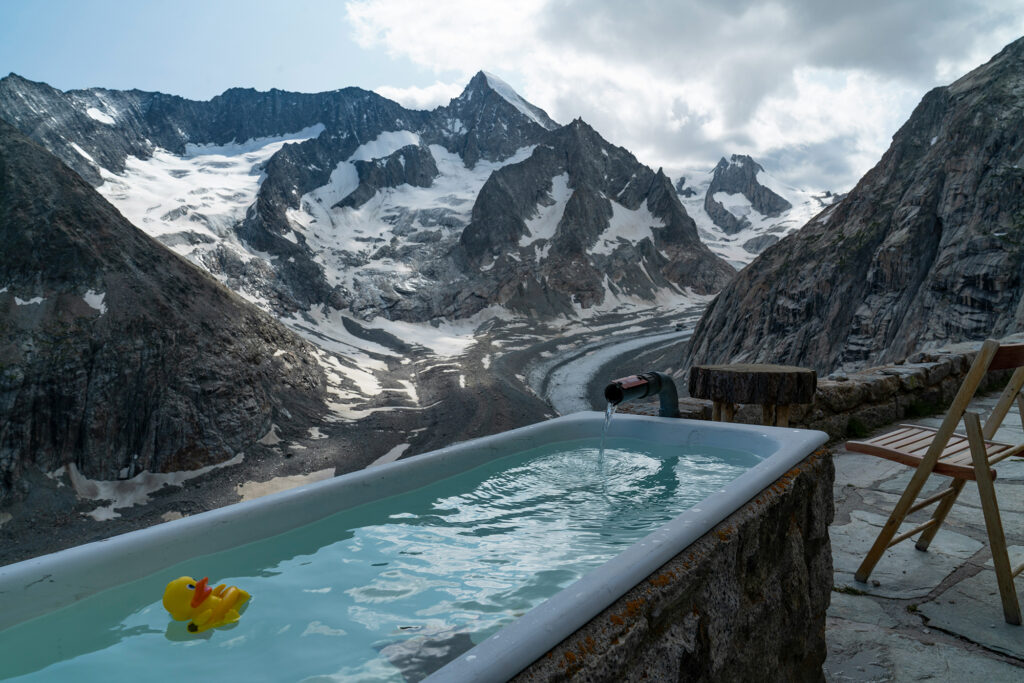When it comes to recovery methods for athletes and fitness enthusiasts, both ice baths and cold showers have been widely discussed and debated. Each has its proponents, but which method truly stands out as the better option?
In this blog post, we will delve into the science behind both ice baths and cold showers, their benefits, drawbacks, and appropriate use cases to help you make an informed decision.
Introduction to Cold Water Therapy
Cold water therapy has been used for centuries for its purported health benefits, ranging from enhanced recovery to improved mood. Today, it’s particularly popular in the fitness community.
The two most common methods are ice baths and cold showers. While they share some similarities, they also have distinct differences that make each unique.
Ice Baths: An Overview
What is an Ice Bath? An ice bath involves immersing the body in very cold water, typically between 0-15°C (32-59°F), often with ice forming. Sessions usually last from 10 to 15 minutes.
Benefits of Ice Baths
- Enhanced Muscle Recovery: Ice baths are known to reduce muscle soreness and inflammation. This is especially beneficial after intense workouts or competitions. The cold water constricts blood vessels, which helps to flush out metabolic waste products from the tissues .
- Reduced Inflammation: The cold temperature helps reduce inflammation and swelling in muscles and joints. This is why ice baths are commonly used by athletes post-injury .
- Mental Health Benefits: The shock of cold water can increase the production of norepinephrine, a hormone and neurotransmitter that can help reduce stress and anxiety .

Drawbacks of Ice Baths
- Discomfort: Ice baths can be extremely uncomfortable, especially for those who are not accustomed to cold exposure. The initial shock and prolonged cold can be daunting.
- Time Limit: Prolonged exposure to very cold temperatures can lead to hypothermia or frostbite, especially if not monitored correctly. It’s crucial to limit time spent in an ice bath and ensure the water temperature is within a safe range .
- Accessibility: Preparing an ice bath requires a significant amount of ice and water, which can be inconvenient and less accessible for regular use. A Walrus ice bath negates the need for such lengthy preparation as, according to your settings, our state-of-the-art ice bath creates its own ice.

Cold Showers: An Overview
What is a Cold Shower? A cold shower involves bathing in cold water, typically at a temperature of around 10-20°C (50-68°F). Unlike ice baths, cold showers do not require immersion in a body of water but simply the use of a regular shower.
Benefits of Cold Showers
- Convenience and Accessibility: Cold showers can be taken in any standard bathroom without the need for special preparation. This makes them a more convenient option for daily use.
- Improved Circulation: Alternating between hot and cold water can improve blood circulation. Cold showers cause blood to move towards the organs to keep them warm, which can stimulate blood flow .
- Enhanced Alertness: A cold shower in the morning can wake you up quickly and increase your alertness by triggering the release of adrenaline and improving overall mental clarity .
- Skin and Hair Benefits: Cold water can improve the appearance of skin and hair by tightening cuticles and pores and preventing them from getting clogged .
Drawbacks of Cold Showers
- Less Intense Recovery: While cold showers can help with muscle recovery, they are generally less effective than ice baths due to the lower intensity of cold exposure.
- Adaptation Required: The initial discomfort of a cold shower can deter many from incorporating it into their daily routine. Gradual adaptation is often necessary.
Comparative Analysis
Effectiveness in Muscle Recovery
Ice baths are generally more effective for muscle recovery and reducing inflammation due to the more intense cold exposure. This method is particularly useful for athletes who undergo intense training sessions and require quick recovery to maintain performance levels .
Convenience and Accessibility
Cold showers are far more convenient and accessible compared to ice baths. They do not require any special equipment or large amounts of ice, making them suitable for daily use.
For those with busy schedules, cold showers offer a practical alternative for incorporating cold water therapy into their routine. However, it will only be as cold as the cold water in your domestic supply and cannot be lowered.
Safety Considerations
Both methods have safety considerations that need to be taken into account. Ice baths pose a higher risk of hypothermia and frostbite if not monitored correctly, while cold showers are generally safer for regular use.
However, it’s essential to start with shorter durations and gradually increase exposure to avoid any adverse effects .
Mental Health Benefits
Both ice baths and cold showers can have positive effects on mental health by reducing stress and anxiety levels. The release of norepinephrine and the endorphin rush from cold exposure can improve mood and overall mental well-being. However, the intensity and duration of the mental benefits can vary between individuals .

Personal Preferences and Use Cases
Athletes and Intensive Training Regimens
For athletes or individuals undergoing intensive training, ice baths are often the preferred choice due to their superior effectiveness in reducing muscle soreness and inflammation. These individuals might benefit from scheduled ice bath sessions after particularly strenuous workouts or competitions.
General Fitness Enthusiasts and Daily Use
For the average person looking to incorporate cold water therapy into their daily routine, cold showers are a more practical and sustainable option. They offer many of the same benefits as ice baths, albeit to a lesser degree, without the need for special preparation or equipment.
Injury and Rehabilitation
For injury recovery and rehabilitation, ice baths may be more beneficial due to their ability to reduce inflammation and swelling more effectively. However, it is crucial to consult with a healthcare professional before starting any cold therapy regimen to ensure it is appropriate for your specific condition .
In Summary
Both ice baths and cold showers have their unique advantages and disadvantages. Ice baths are highly effective for muscle recovery and reducing inflammation but come with higher risks and less convenience.
Cold showers, on the other hand, are more accessible, safer for regular use, and still offer significant benefits for circulation, mental alertness, and skin health.
The choice between an ice bath and a cold shower ultimately depends on your specific needs, preferences, and lifestyle. Athletes and those requiring intensive recovery may find ice baths more beneficial, while general fitness enthusiasts might prefer the convenience and accessibility of cold showers.
By understanding the science and benefits behind each method, you can make an informed decision and incorporate the most suitable cold water therapy into your routine for optimal health and performance.
References:
- Healthline – Benefits of Ice Baths
- Medical News Today – Ice Bath Benefits
- Verywell Fit – Ice Baths for Athletes
- WebMD – Ice Bath Risks
- Healthline – Benefits of Cold Showers
- Medical News Today – Cold Showers
- Verywell Health – Cold Showers and Skin
- Men’s Health – Ice Bath vs. Cold Shower
- Mindbodygreen – Cold Showers
- Harvard Health – Cold Exposure
- Psychology Today – Cold Water Therapy
- National Institutes of Health – Cryotherapy
By critically assessing your needs and the benefits of each method, you can optimise your recovery and health regimen. Whether you choose an ice bath or a cold shower, incorporating cold water therapy can be a valuable addition to your fitness and wellness routine.

